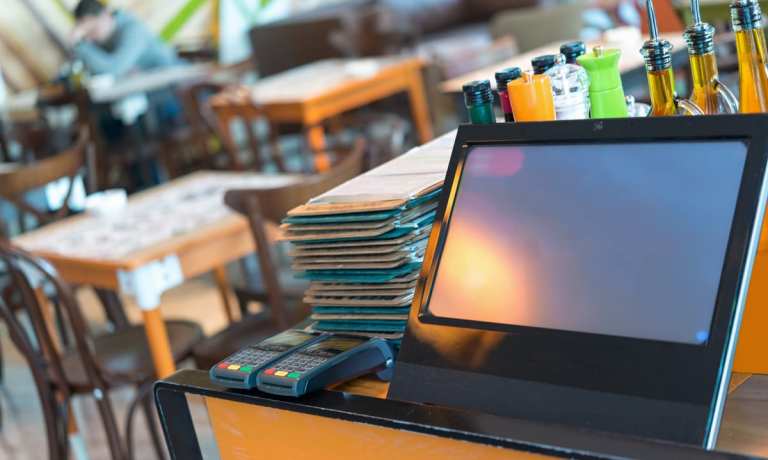
Restaurants are beginning to recover from the devastating events of the past 15 months, but the road is rocky. As the public sector aims to revitalize the restaurant industry with federal funds, the private sector is making its own efforts to help these struggling businesses. For instance, celebrity chef Guy Fieri’s Guy’s Restaurant Reboot, a prime-time special that will air Saturday (June 12), will provide more than $300,000 in grants to restaurant owners.
One of the event’s partners, restaurant management system and point of sale (POS) provider SpotOn, will be presenting a conversation with prominent chefs and industry personalities discussing restaurant technology trends. In advance of the special, SpotOn Co-Founder and Chief Product Officer Doron Friedman spoke with PYMNTS about restaurant technology trends facing the industry, and about the role POS plays in restaurants’ recovery.
“For some, they look at a restaurant POS as if it’s just an order-taking solution, but it’s really a restaurant’s lifeline,” Friedman said. “A POS is a restaurant’s connection with their customers, it drives the business growth, but it has to be completely integrated into everything a restaurant does to create a better experience for guests and a better business overall.”
He added that this sort of integration is “such a missed opportunity” across the industry.
Four Key Trends In POS
Friedman highlighted four major trends to note in the POS space: the move toward omnichannel capabilities, the increased need for order fulfillment pacing tools, the demand for more transparency for restaurant customers and the need to accept as many kinds of digital payments as possible.
To the first, he said, “The legacy software out there no longer serves today’s restaurateur who is managing experiences on-site, online, curbside, and via delivery.” With the different channels restaurateurs are juggling, systems now need to communicate with one another. Similarly, the variety of types of orders coming into the kitchen also plays into that second trend, the move toward smarter pacing tools, as restaurants look to prepare dine-in, takeout, delivery and sometimes drive-thru orders, all at the same time.
In terms of customer transparency, Friedman notes that this can be a vital tool in maintaining relationships amid staff shortages: “Whether it’s a texting solution to better communicate with guests when their food or table is ready or using a QR code to place an order at the table or pay as they leave, it’s very much about the interactive relationship between the customer and the restaurant.”
The fourth, of course, is fairly intuitive — as customers choose the payment method that fits the best into their lifestyle, restaurants that can accommodate those technologies will be better positioned to meet the needs of the consumer. Additionally, Friedman noted that this information can be used “to market and incentivize customers to spend more and visit more often.”
The Opposite Poles Of ResTech’s Future
Outside of POS, Friedman predicts “two extremes” in restaurants’ future, extremes in which technology will play a central role. He predicts that, to thrive in years to come, quick-service restaurants (QSRs) will need to grow increasingly quick and efficient, while on the other hand full-service restaurants will need to fulfill consumers’ need for social connection and meaningful experiences.
He predicts that, given the QSR trend toward convenience, delivery order fulfillment capabilities will become “more automated with drones and/or robots.” Additionally, we will also see an increase in contextual commerce.
“In the near future, consumers will use … voice technology regularly in placing takeout or delivery orders from local restaurants,” said Friedman.
PYMNTS’ 2020 How We Will Pay study, created in collaboration with Visa, found the share of consumers making purchases via voice assistant was up 42 percent since 2018 and up 10 percent since 2019, and the technology has only grown more popular as the pandemic has progressed.
Regarding full-service restaurant trends, Friedman predicts, “These restaurants will lean into a much more social experience … Technology will help connect and streamline the service elements, so diners have more time to enjoy the experience and the people they are with.”
Meeting Customers Where They Are
Throughout the rest of the year, Friedman expects increased need for technologies that allow restaurants to serve their customers where they are, in a literal, geographical sense, as consumers begin to expect their restaurant meals quickly and seamlessly wherever they may be.
He cites “technology like order and pay-at-the-table handheld devices and QR codes” as technologies that will allow restaurants to do this within their own walls, echoing the thoughts that restaurant platform Olo CEO Noah Glass shared with PYMNTS in May.
“It used to be that restaurants served their guest in the restaurant; now they’re serving them curbside, at home, on social media,” said Friedman. “They need to be able to have the tools to consistently build that guest relationship, to build loyalty and lasting business.”